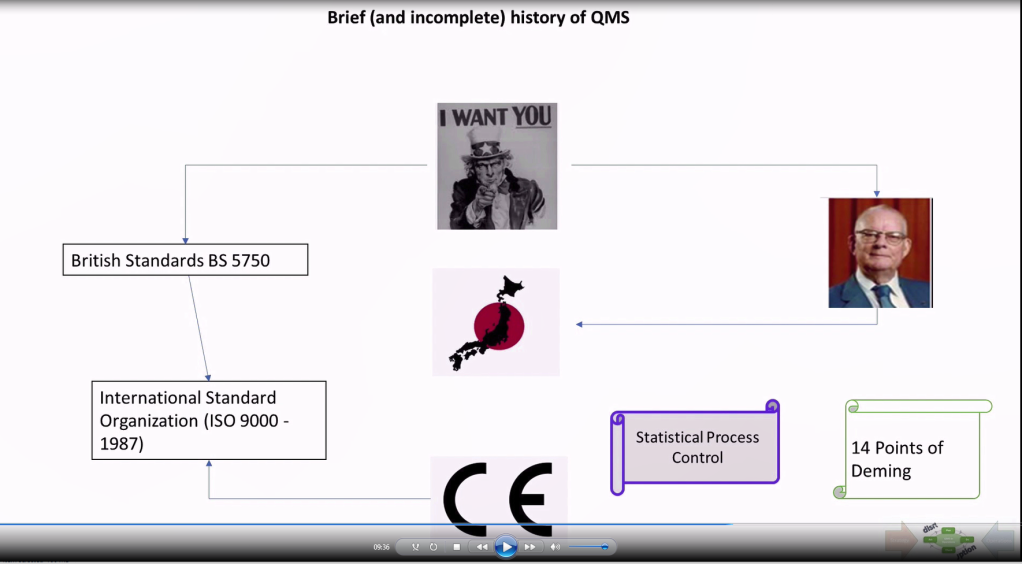For EMMA (the new CEO of BIT) was quite clear “HOW” the ISO 9001 QMS can support BIT in his Digital Transformation journey.
During the talk with Paul (the quality coordinator of BIT) the subject of the mission and principles of BIT (the WHY) was touched.
As the highest leader of BIT, she knew that she needed to go deeper in understanding the link between the HOW and the WHY of BIT; it was time to invite Paul for another lunch (but this team in a Chinese restaurant).
How BIT Used ITIL Best Practices to Implement ISO 9001
The current CEO of BIT (Emma), was interested to understand how an ISO 9001 QMS introduced in the late 80’s could still be useful for the Company.
So, the question is how a “Norm” like ISO 9001 can exhibit such flexibility to accommodate the big changes of BIT over such an extended period of time? The secret to its resilience lies in its high-level approach, which empowers organizations to tailor it to their specific needs. In this post, we will explore how ISO 9001’s high-level framework has been a strength for businesses like BIT, emphasizing the importance of incorporating best practices into the norm.
Unraveling the Connection: A Q&A Journey on ISO 9001 in BIT’s Digital Transformation.
After speaking with HR, Finance and Services about Kanban method advantages for BIT, Paul was expecting to be called by Emma, the General Manager of BIT. The call arrived but he was surprised by the Outlook invitation content: I wish you explain to me how the current ISO 9001 system is helping (if any) BIT Digital Transformation”. You have one hour.
Continue readingUsing Cumulative Flow Diagrams to Analyze Process Stability in Kanban.
The concept of a stable process is not new to the BIT service team. In the Kanban method, the definition of stability is not based on the (quite difficult) concept of assumption of stationarity but on the more intuitive notion that the arrival rate of new work items and the departure rate of completed work items are (in average) equals.
However, the bottom-line message is the same: if the process is not stable (under control), you cannot make forecasts.
Practically, it is possible to understand if the process is stable through the analysis of a chart: the Cumulative Flow Diagram (CFD).
Brief (and incomplete) history of the QMS.
Kanbanize board: introduce WIP limits.
After visualizing the value chain, it is time for the service team of BIT to introduce Work in Progress Limits in the Kanbanize dashboard.
Continue readingKanban in practice: determine the value stream mapping.
The first step of the Kanban approach is mapping the value chain of the organization (or of the team, depending at which level the approach is focusing). The process should be mapped “as it is”.
At the starting point of the mapping process, particularly useful is the operating model canvas (that is part of the ISO 9001 system of BIT).
Let’s talk about Kanban with the Business Unit Managers.
After obtaining the sustain of HR and Finance, it was the turn to obtain the one from the Business Units managers. Let us have a talk with them.
Continue readingCost of delay to highlight the cost of queues: fundamental step to introduce the Kanban methodology.
Paul (the quality coordinator of BIT), was able to obtain the sustain of HR to introduce Kanban methodology in BIT. But this was not enough: he needed now the support of Finance.
Continue readingCan Kanban practices be used to prevent burn out?
In the last three years, BIT had 4 cases of employee burn out. Three of them were young employees, holding an operative level; one was a middle manager around 40 years hold.
Paul, the quality coordinator of BIT, who has also the role of Health and Security (H&S) agent, believes it is time to insert the prevention of psychological risks (PSR) in the QMS of the Company
